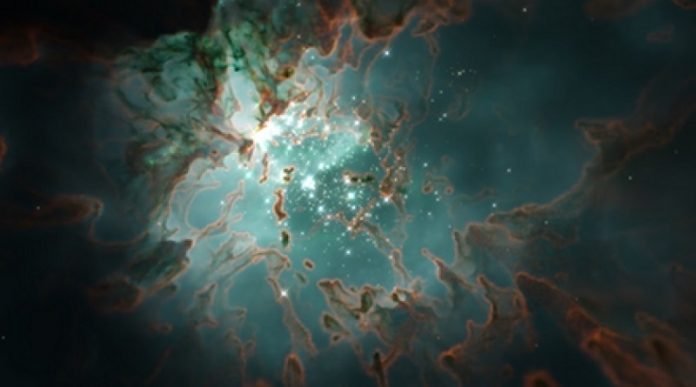
Last year, a team of astrophysicists launched Star Formation in Gaseous Environments, or STARFORGE, a project that produces the most realistic, highest-resolution 3D simulations of star formation to date.
Now, the scientists have used these simulations to uncover what determines the masses of stars, a mystery that has captivated astrophysicists for decades.
In a new study, the team discovered that star formation is a self-regulatory process. In other words, stars themselves set their own masses.
This helps explain why stars formed in disparate environments still have similar masses.
The new finding may enable researchers to better understand star formation within the Milky Way and other galaxies.
The U.S. National Science Foundation-funded study was published in Monthly Notices of the Royal Astronomical Society.
The team included scientists at Northwestern University, the University of Texas at Austin, Carnegie Observatories, Harvard University and Caltech. The lead author of the study is Dávid Guszejnov at UT Austin.
“Understanding the stellar initial mass function is such an important problem because it impacts astrophysics across the board — from nearby planets to distant galaxies,” said Northwestern’s Claude-André Faucher-Giguère, a study co-author.
“This is because stars have relatively simple DNA. If you know the mass of a star, then you know most things about the star: how much light it emits, how long it will live and what will happen to it when it dies.
The distribution of stellar masses is thus critical for whether planets that orbit stars can potentially sustain life as well as what distant galaxies look like.”
Outer space is filled with giant clouds, consisting of cold gas and dust. Slowly, gravity pulls far-flung specks of this gas and dust toward each other to form dense clumps.
Materials in these clumps fall inward, crashing and sparking heat to create a newborn star.
Surrounding each of these “protostars” is a rotating disk of gas and dust. Every planet in our solar system was once specks in such a disk around our newborn sun.
Whether or not planets orbiting a star could host life is dependent on the mass of the star and how it formed. Therefore, understanding star formation is crucial to determining where life can form in the universe.
“Stars are the atoms of the galaxy,” said Stella Offner at UT Austin, a study co-author. “Their mass distribution dictates whether planets will be born and if life might develop.”



